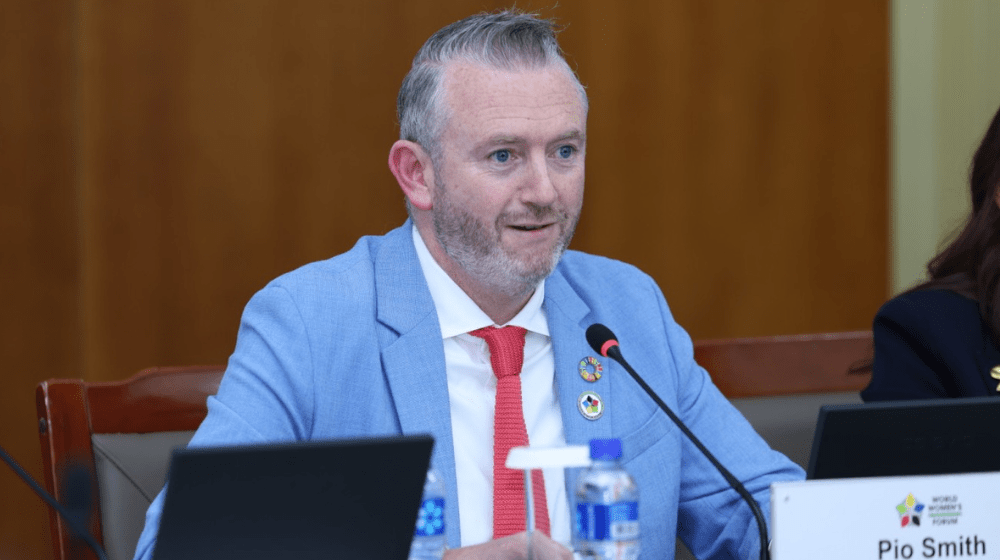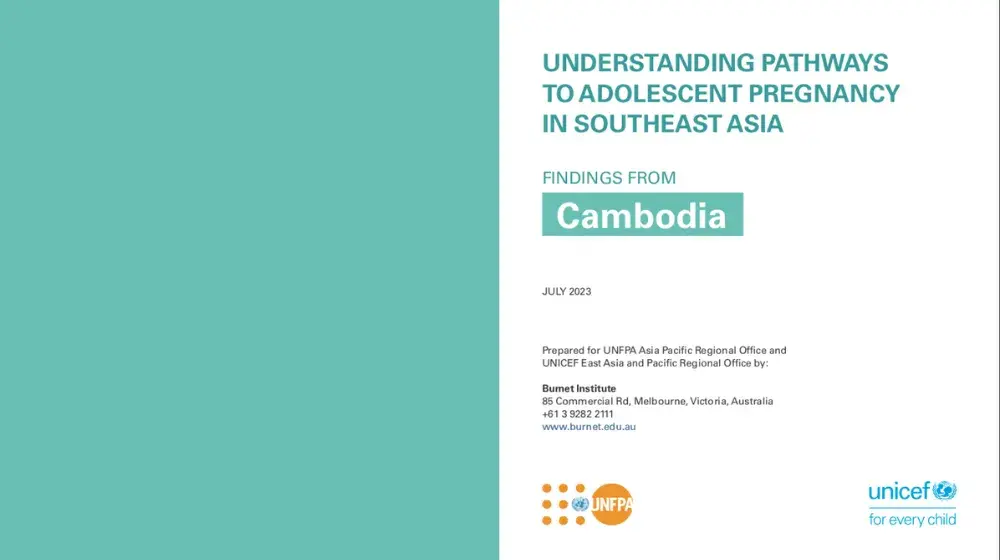Good afternoon, esteemed keynote speakers, panel members, colleagues and distinguished participants.
At the outset, I would like to express my deepest gratitude to the Government of Mongolia for hosting the World Women’s Forum, under the auspices of His Excellency the President.
It’s great to be here at a two day event where I don’t have to be concerned about being on a “manel” – I am blessed to be around so many leaders who are women.
Women have a strong history of leadership in Mongolia, guiding political affairs and safeguarding the well-being of the nation since the Mongol Empire.
Today, this legacy lives on as women in Mongolia continue to shape the country’s future. Yet, let’s not fool ourselves, much work remains here and across the Asia-Pacific region to ensure that women hold top decision-making roles to achieve gender equality, gender equity, improve policy outcomes, and reflect the diverse needs and aspirations of all individuals.
I am therefore delighted to be here to speak at this critical session on "The Importance of Education in Empowering Women and Girls, and its Impact," and I am honored to share a regional perspective on the future of girls’ education and empowerment.
The United Nations 2030 Agenda and its Sustainable Development Goals are centered around peace, prosperity, sustainability, and progress for all. Yet, we are all keenly aware that these goals can only be achieved if we build a world where equal opportunities are accessible to everyone, regardless of their gender.
Education plays a pivotal role in shaping this future for women and girls. Comprehensive Sexuality Education, or CSE, is essential in this journey, providing young women with the knowledge, skills, and attitudes they need to make informed decisions about their sexual and reproductive health. Likewise, boys and young men also benefit from CSE programmes.
From my interactions with young people here in Mongolia and across this region, I have seen first-hand the positive impact of CSE amongst boys and girls who share a mutual respect for each other, as was highlighted by the President in the opening ceremony this morning. That respect extends beyond the relationship between two adolescents.
Indeed, CSE goes beyond simply delivering information; it empowers girls and boys to understand their bodies, their rights, and the social dynamics that influence their lives. By equipping them with the tools to navigate and pursue respectful relationships, understand consent, and manage their reproductive health, CSE helps young people, especially girls, to grow into confident, informed adults, capable of making choices that safeguard their well-being.
However, in many parts of the region, young women face significant challenges related to sexual and reproductive health, simply because they are female. These challenges often stem from prevailing gender and social norms that privilege men over women or stigmatize adolescent sexuality, as well as the lack of access to accurate information and life-saving services.
Unfortunately, young women bear the burden, such as early and unintended pregnancies, sexually transmitted infections, and gender-based violence.
The good news is that we know how to address these issues head-on as Mongolia did, by institutionalizing CSE in 2018 with the support of UNFPA.
When that young girl is equipped with knowledge and skills about her sexual and reproductive health and rights, she is better prepared to make informed decisions, avoid potential health risks, advocate for herself, and pursue the goals she wants without being hindered by preventable health issues.
Empowering all women and girls through education includes CSE and much more. To fully prepare them for the future, it is crucial to also focus on other types of education, including Science, Technology, Engineering, and Mathematics or as we call in short STEM education.
STEM fields are the engines of innovation and economic growth, and women must be equally represented in these areas. Integrating STEM education into the curriculum at the primary, secondary, and higher education levels, and providing incentives especially for girls, ensure that they are not left behind in these critical fields.
Solutions for women continue to be designed without women. Approximately 80 per cent of the practicing industrial designers and architects are men. Women continue to be excluded from design-processes, resulting in a general misunderstanding of women’s needs. The risk of whiplash injuries in car accidents is at least double for women compared to men. In fact, the first female crash test dummy was introduced only three years ago!
STEM education equips boys and girls with the analytical skills, problem-solving abilities, and technological expertise that are indispensable in today’s world. Yet, in many parts of this region, women and girls face significant barriers to entering and excelling in STEM fields.
For example, teachers and parents may show biases toward boys to perform better in STEM subjects rather than girls. Moreover, STEM fields tend to be male-dominated, with fewer female role models to inspire girls to embark on these careers. The representation of women in STEM across Asia-Pacific is only about 24 per cent, significantly lower than the global average of 29 per cent.
Women and girls are also less likely to have access to digital technologies. For instance, in South Asia, the mobile ownership rate for women is 65 per cent, compared to 88 per cent for men, of course this exacerbates social exclusion and widens the gender digital divide. These disparities highlight the urgent need for targeted interventions to close the gender gap in technology and science.
Addressing gender equity in technology and science is not only a matter of justice or morality—it's also a strategic economic investment. A recent study in the United States revealed that investing in women's health research could yield a return of $40 for every dollar invested.
Such evidence underscores the enormous economic potential of actively involving women and girls in STEM. By empowering them, we are not just promoting gender equity; we are making smart investments in our collective future.
To address the challenges in making advancements, governments must take decisive actions that prioritize gender equality within education, and especially in STEM education and in Comprehensive Sexuality Education. Implementing gender-responsive policies is key. This includes creating scholarships and incentives for girls to complete at least secondary education and participate in STEM, as well as setting quotas for female representation in STEM programmes.
At the same time, integrating CSE into national curricula is crucial to providing all students with accurate, unbiased education on sexual and reproductive health and life skills. These steps will empower girls and encourage them to pursue STEM careers.
Governments must also invest in educational infrastructure, particularly in rural and underserved areas. Providing digital tools, internet access, and safe learning environments is crucial to ensure that all girls can benefit from both STEM and CSE. Without these investments, the gender gap in education will only continue to grow.
Public awareness campaigns are essential to challenging societal norms that undervalue girls and ultimately discourage young girls from pursuing STEM. By promoting positive role models and success stories, governments can inspire girls to explore STEM and equip them with the knowledge to make informed life choices.
Finally, teacher training is vital. Well-trained teachers can create safe and supportive environments where all students learn, take steps to pursue their interests, and plan their futures.
UNFPA is committed to supporting governments in these efforts. But we are also keen to expand partnerships with other entities, which is why we established the Equity 2030 Alliance—to have a unified global effort consisting of businesses, partners, and academia to help deliver gender equity in science, technology, and in financing by 2030.
We want that teenage girl to not only grow up in a world that is designed for her, but a world that is designed by her. When she is truly, fully empowered, it is only then that we can celebrate the modern advances of our world and the brilliance of the human family.
However, as we seek to leverage technological advances, we must also confront the challenges, particularly those related to technology-facilitated gender-based violence. The digital world, while offering unprecedented opportunities, has also given rise to new forms of violence against women and girls.
Globally, up to 38 per cent of women and girls have experienced online violence themselves, with 85 per cent witnessing it against others. This is a pressing issue in Asia-Pacific, and beyond, manifesting in various ways, from cyberstalking and online harassment to the non-consensual sharing of intimate images. These forms of gross violence not only cause immediate harm but also contribute to a culture of fear and silence that hinders women's full participation in the digital space and beyond.
To combat technology-facilitated gender-based violence, governments must implement robust legal frameworks that protect women and girls online, ensure that perpetrators are held accountable, and provide support services that are funded for survivors. Additionally, promoting digital literacy is key to helping girls understand their rights in the digital world, to recognize the signs of online abuse, and seek help when needed.
Finally, as more and more countries join the digital revolution, ensuring that all digital tools and applications follow safety and ethical guidelines is critical to ensure that women and girls don’t, inadvertently, get further harmed from resources developed to support them.
Let me also be clear, in addressing all these issues, we must involve men and boys. But let me also be clear – men must step up and men must speak up.
As we move forward, let us commit to advancing gender equality through a dual focus on education and STEM. By integrating CSE and STEM into our educational frameworks, addressing the challenges of technology-facilitated gender-based violence, and implementing these recommendations, we can create a future where every girl has the opportunity to fulfill her potential, contribute to her community, and shape a more just and inclusive world.
Thank you once again for joining us. Let us engage actively, share insights, and work together to make this vision a reality.





